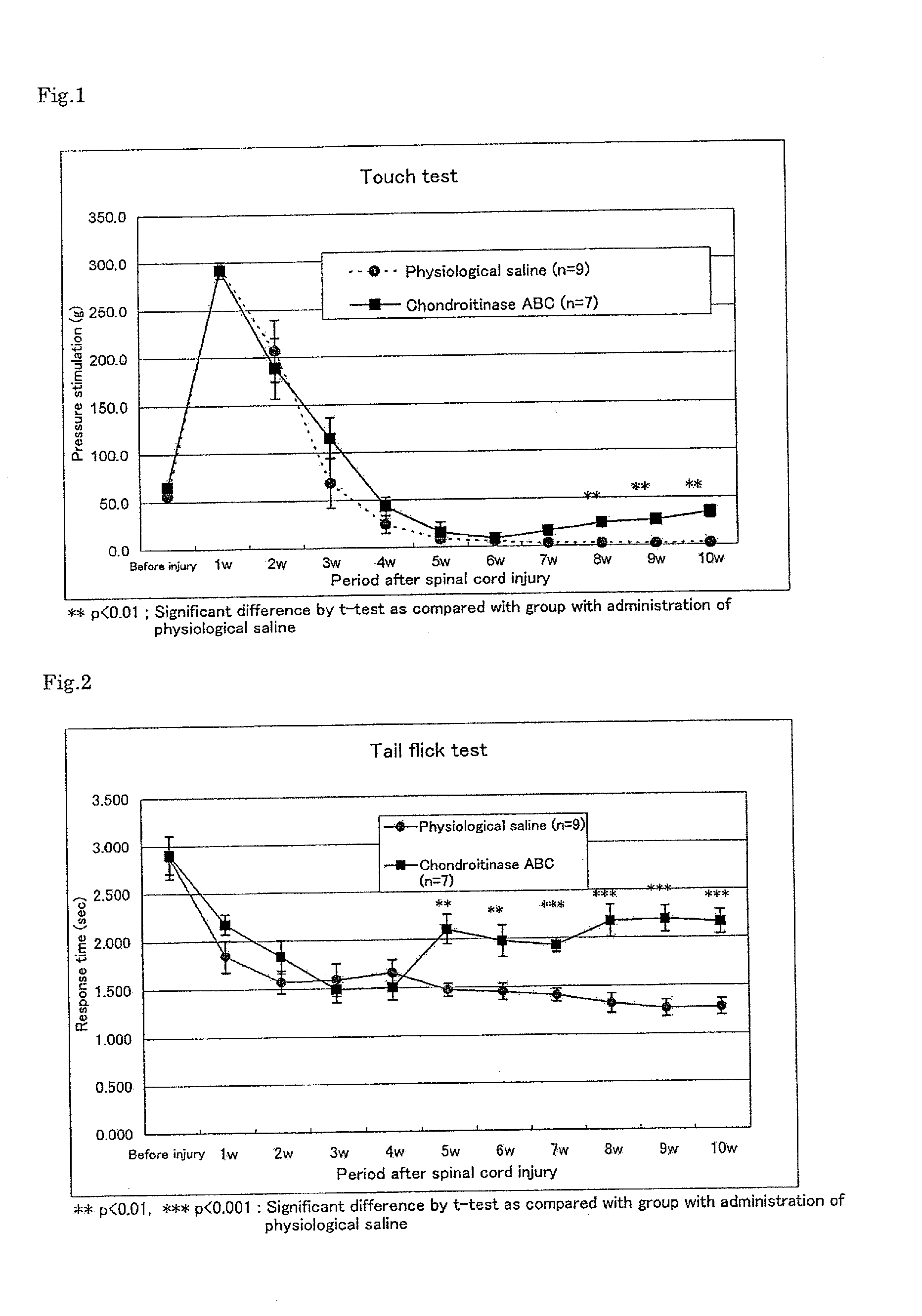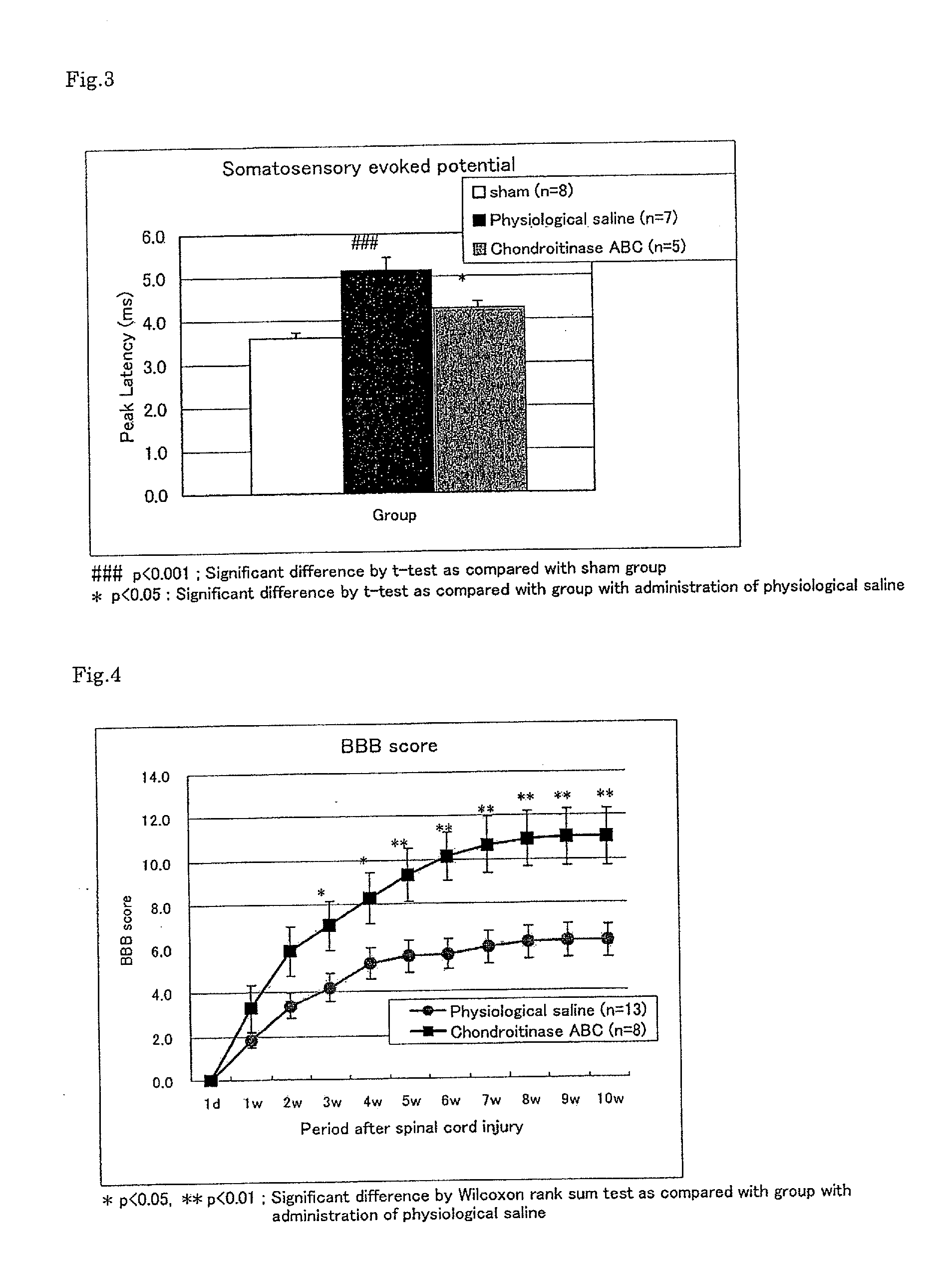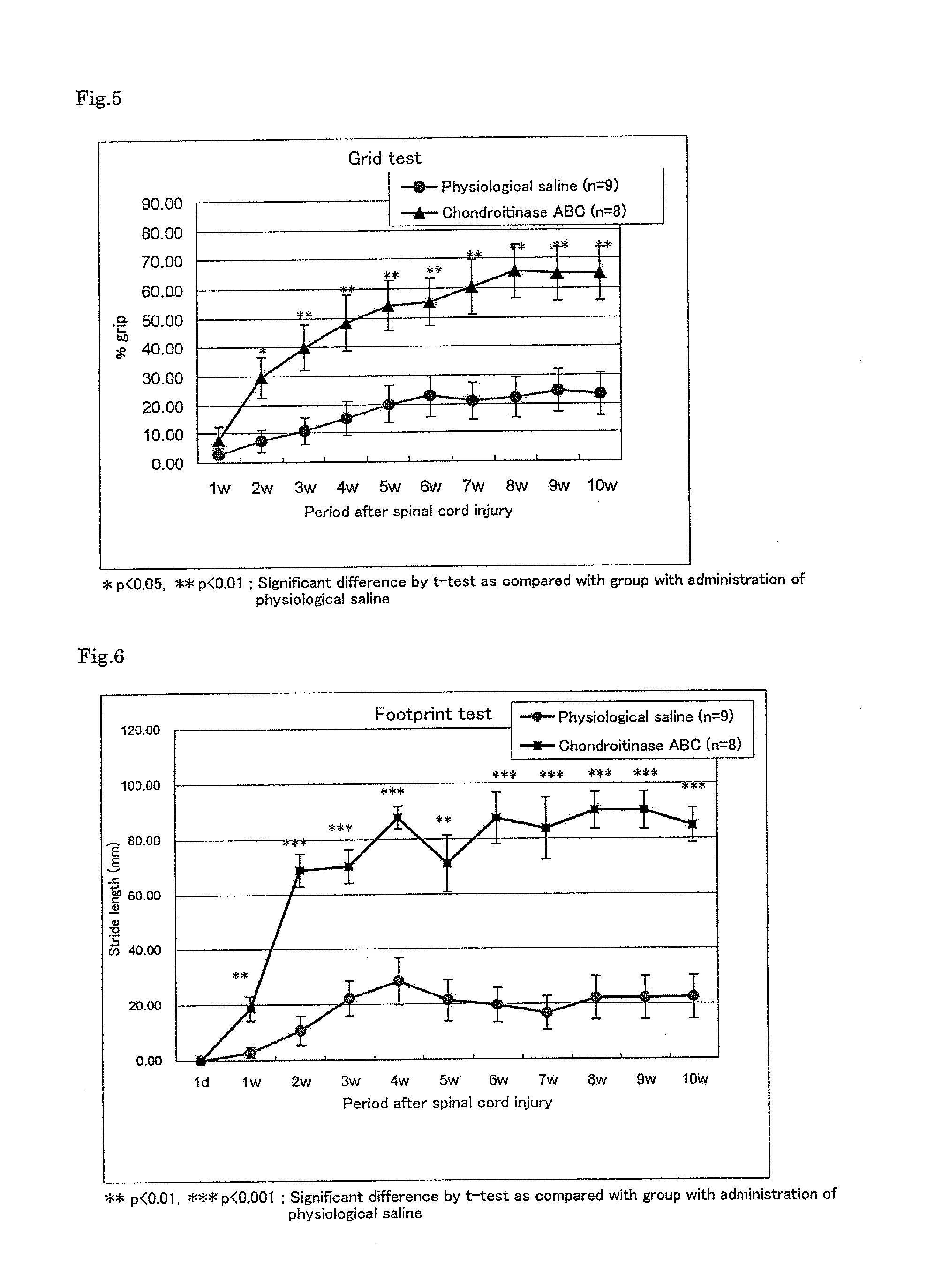Agent for neuropathic pain
a neuropathic pain and agent technology, applied in the field of improving agents for neuropathic pain, can solve the problems of almost no satisfactory drug therapy for neuropathic pain, significantly reducing the qol of patients, and reducing the effectiveness of rehabilitation, so as to improve the activity of sensory nerve function, and improve the effect of neuropathic pain
- Summary
- Abstract
- Description
- Claims
- Application Information
AI Technical Summary
Benefits of technology
Problems solved by technology
Method used
Image
Examples
example 1
Improving Activity of Chondroitinase ABC on Allodynia and Sensory Nerve Dysfunction Such as Hyperalgesia or the Like After Spinal Cord Injury
(Experimental Method)
[0083]As animals, S.D. rats (Nippon SLC Co., Ltd., female, 9 weeks of age) were used. Under anesthesia with a cocktail of ether and ketamine, the ninth and the twelfth thoracic vertebrae were laminectomized, and a spinal cord injury on the ninth thoracic vertebra was induced by crushing using IH-0400 Impactor. After the injury, small incision was done to the dura mater of the twelfth thoracic vertebra and a microtube was inserted into the subarachnoid cavity under a microscope. The microtube was connected to an osmotic pump (Alzet Osmotic Pump) in which a test sample was previously filled. The tube and the pump were fixed onto the interspinal ligament and the muscle. Thereafter, the wound of the muscle layer and the skin was closed. After the operation, the rat was orally given an antibiotic for two weeks. The manipulative ...
reference example 1
Improving Activity of Chondroitinase ABC on Motor Dysfunction After Spinal Cord Injury
(Experimental Method)
[0090]An experiment was performed in the same manner as in Example 1.
Reference Experimental Results Part 1
Evaluation of Hind Limb Motor Nerve Function (BBB Test)
[0091]One day after the injury and once a week from one week after the injury to 10 weeks thereafter, the hind limb motor nerve function was evaluated using a Basso-Beattie-Bresnahan (BBB) scale in accordance with a method of Basso et al. (Basso, D. M., Beattie, M. S. & Bresnahan, J. C., Graded histological and locomotor outcomes after spinal cord contusion using the NYU weight-drop device versus transection, Exp. Neurol., 139, 244-256 (1996)), and the results were expressed as BBB scores. The test was performed in a blind manner by two examiners and the score was expressed as an average value of the results of two examiners. As for the statistical analysis, intergroup comparisons for the respective evaluation time poin...
preparation example 1
[0095]A solution preparation containing the above-mentioned high-purity chondroitinase ABC at a concentration of 0.05 U / 200 μL was prepared by dissolving the chondroitinase ABC in physiological saline.
PUM
| Property | Measurement | Unit |
|---|---|---|
| weight | aaaaa | aaaaa |
| body weight | aaaaa | aaaaa |
| weight | aaaaa | aaaaa |
Abstract
Description
Claims
Application Information
 Login to View More
Login to View More - R&D
- Intellectual Property
- Life Sciences
- Materials
- Tech Scout
- Unparalleled Data Quality
- Higher Quality Content
- 60% Fewer Hallucinations
Browse by: Latest US Patents, China's latest patents, Technical Efficacy Thesaurus, Application Domain, Technology Topic, Popular Technical Reports.
© 2025 PatSnap. All rights reserved.Legal|Privacy policy|Modern Slavery Act Transparency Statement|Sitemap|About US| Contact US: help@patsnap.com



